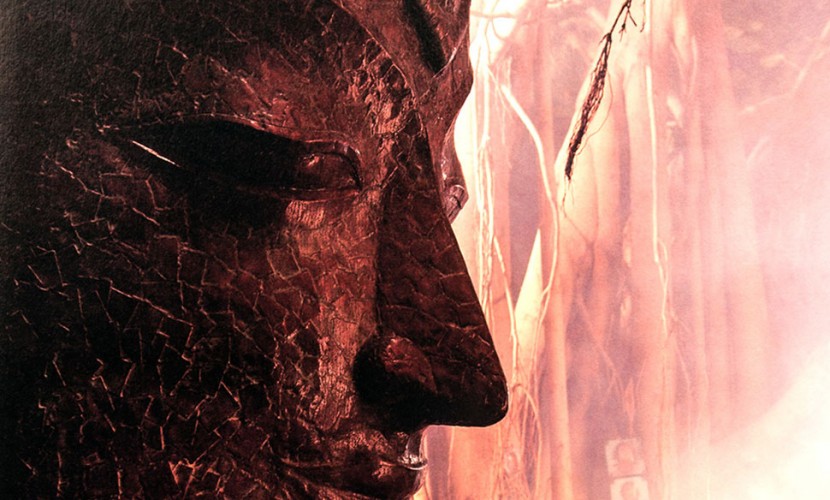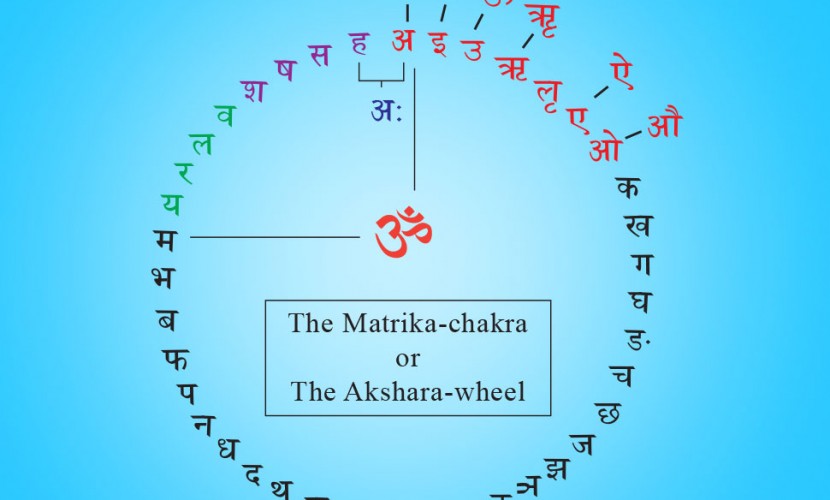The Shiv sūtras were first revealed in the late 8th century A.D. by Shiva to Vasugupta in person on mount Mahadeva in the Kashmir Himalayas. Later expounded by one of his students Abhinavagupta, this philosophy came to be known as Kashmir Shaivism and is an integral part of the Agamas literature in Hindu thought. The Spanda-kaarikas are a commentary on the Shiva- sūtras whose authorship is credited to Kallatta, a chief disciple. The first Shlöka of these kaarikas underlines the very act of Creation & Destruction of this ephemeral Universe as the mere blink of Shiva’s eyes:- We laud that Shankara, by whose mere opening and shutting of the eye-lids, there is the appearance and dissolution of the world and who is the source of the glorious powers of the collective whole of the shaktis in various forms. (1st Shloka) Spanda-kaarikaas, ‘The Divine Creative Pulsation’ by Jaidev Singh[1] Spanda literally means a ‘throb’, a pulsation of energy that spawns all creation. One blink of Shiva’s eyes, the unmesha and the nimesha, releases an intense cosmic pulse that unfolds billions of years of galactic causation. The Unknown in the Shiva- sūtras is the Naad-Brahman and this initial pulse is […]
yasyaaonmaoYainamaoYaaByaaM jagat: p`layaaodyaaO . tM Sai>caËivaBavap`BavaM SaMkrM stuma: ..1.. yasya ]nmaoYa inamaoYaaByaaM jagat: p`laya ]dyaaO. tM Sai>caË ivaBava p`BavaM SaMkrM stuma: ..1.. We laud that Shankara by whose mere opening and shutting of the eye-lids there is the appearance and dissolution of the world and who is the source of the glorious powers of the collective whole of the shaktis in various forms. (1st Shloka) Spanda-kaarikaas, ‘The Divine Creative Pulsation’ by Jaidev Singh From time to time, our land has given rise to enlightened souls called Avatars. These rare persons have often taken birth in turbulent times of external invasions or internal decrepitude. They have all led exemplary existences and one such embodiment was Vasugupta, the main exponent of the Shiva- sutras. These sutras or ‘condensed mantras’ were first revealed, in the late 8th century A.D., by Shiva directly to Vasugupta on mount Mahadeva in the Kashmir Himalayas. Later expounded by one of his students Abhinavagupta, this philosophy came to be known as Kashmir Shaivism and is an integral part of the Agamas literature in Hindu thought. The Spanda-kaarikaas are a commentary on the Shiva- sutras whose authorship is credited to Kallatta, a chief disciple. Spanda literally means a ‘throb’, […]
As the Vedic rishis sat in the serene foothills of the Himalayas, thousands of years ago, they meditated upon the mysteries of the Universe – the Unknown, the Brahman. Their silent minds were in complete synchronicity with the world around them – a unique unison of mind and matter. In this heightened state of Cosmic consciousness answers floated into their enlightened senses as shrutis or latent sound bytes. This was the origin of the Vedas. The mind was the laboratory and the Universal truth the subject. This is how the Unknown, Brahman revealed itself as the first shabd or word. ■■ The Maitri Upanishad [1] VI.22 explains this shabd as arising from a-shabd or non-sound. It says :- And it has been said, there are verily, two Brahmans to be meditated upon – sound and non-sound. By sound alone is the non-sound revealed….[2] Shabd not only means the ‘spoken word’ but it also carries with it the eternal quality of the non-sound. This can be understood as ‘memes’, a concept put forth by Richard Dawkins [3]. He says words, besides pronunciation, carry abstract ideas and together he calls them ‘memes’. These ‘memes’ are “cultural transmission units” that go from memory to memory […]
vaNa- iva&anaBaaYyaM (The Metaphysics of the Sanskrit Alphabet) by Ravi Khanna gee_kay@vsnl.com The Circle of Life by M. C. Escher Paper presented at the International Seminar on SABDA: TEXT AND INTERPRETATION IN INDIAN THOUGHT 2-4 February 2004 Organized by Centre of Linguistics and English, Jawaharlal Nehru University vaNa- iva&anaBaaYyaM (The Metaphysics of the Sanskrit Alphabet) I commence my talk with a quote from Dr. Kapil Kapoor’s paper – “Vivarta & Parināma – Bhartriharī`s Theory of Language” – 1996. He cites Rig Veda I.164.41 as follows … gaurih mimāya salilāni takśati ekpadī dwipadī sā catuspadī astāpadī navpadī babhūvusī sahasrāksarā parme vyöman “ Gauri is the symbol of vāk or speech, according to the shrutīs …. the real significance is that the principle of vāk creates or fashions out the manifold forms out of the waters of the infinite ‘ocean of reality’ … the parme vyöman. You cannot cut forms or draw lines in water, you can do that only in space but ; but reality like water is continuous, indivisible…” The word used here for ocean is salilâ which actually means the surging of waters, the expression here alludes to an agitated ocean, one in which the waves are being […]




